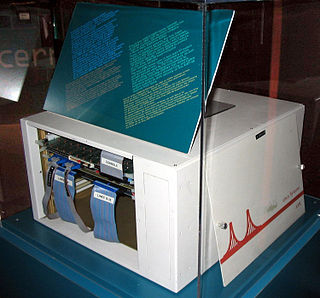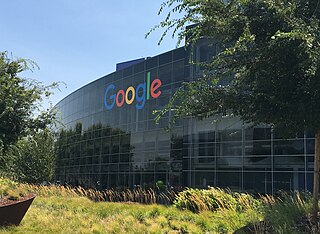
Android is a mobile operating system based on a modified version of the Linux kernel and other open source software, designed primarily for touchscreen mobile devices such as smartphones and tablets. Android is developed by a consortium of developers known as the Open Handset Alliance, with the main contributor and commercial marketer being Google.

The Barnes & Noble Nook is a brand of e-readers developed by American book retailer Barnes & Noble, based on the Android platform. The original device was announced in the U.S. in October 2009, and was released the next month. The original Nook had a six-inch E-paper display and a separate, smaller color touchscreen that serves as the primary input device and was capable of Wi-Fi and AT&T 3G wireless connectivity. The original nook was followed in November 2010 by a color LCD device called the Nook Color, in June 2011 by the Nook Simple Touch, and in November 2011 and February 2012 by the Nook Tablet. On April 30, 2012, Barnes & Noble entered into a partnership with Microsoft that spun off the Nook and college businesses into a subsidiary. On August 28, 2012, Barnes and Noble announced partnerships with retailers in the UK, which began offering the Nook digital products in October 2012. In December 2014, B&N purchased Microsoft's Nook shares, ending the partnership.

Google Play, formerly Android Market, is a digital distribution service operated and developed by Google. It serves as the official app store for the Android operating system, allowing users to browse and download applications developed with the Android software development kit (SDK) and published through Google. Google Play also serves as a digital media store, offering music, books, movies, and television programs. It previously offered Google hardware devices for purchase until the introduction of a separate online hardware retailer, Google Store, on March 11, 2015, and it also offered news publications and magazines before the revamp of Google News on May 15, 2018.
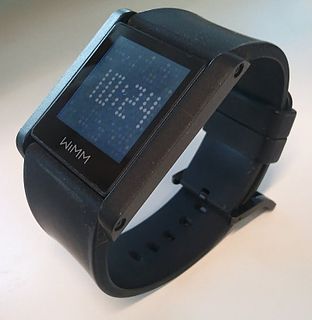
The WIMM One is a developer device for the WIMM platform produced by WIMM Labs. It is a wearable computing device running a modified version of the Android operating system. It comes preloaded with several apps. Additional applications can be downloaded from the micro app store or side-loaded over USB.
Facebook Messenger is a messaging app and platform. Originally developed as Facebook Chat in 2008, the company revamped its messaging service in 2010, and subsequently released standalone iOS and Android apps in August 2011 and standalone Facebook Portal hardware for Messenger-based calling in Q4 2018. Over the years, Facebook has released new apps on a variety of different operating systems, launched a dedicated website interface (Messenger.com), and separated the messaging functionality from the main Facebook app, allowing users to use the web interface or download one of the standalone apps.

Nexus Q is a digital media player developed by Google. Unveiled at the Google I/O developers' conference on June 27, 2012, the device was expected to be released to the public in the United States shortly thereafter for US$300. The Nexus Q was designed to leverage Google's online media offerings, such as Google Play Music, Google Play Movies & TV, and YouTube, to provide a "shared" experience. Users could stream content from the supported services to a connected television, or speakers connected to an integrated amplifier, using their Android device and the services' respective apps as a remote control for queueing content and controlling playback.

Android "Jelly Bean" is the tenth version of Android and the codename given to three major point releases of the Android mobile operating system developed by Google, spanning versions between 4.1 and 4.3.1. Some operating systems that run Android 4.3/4.4 are Asus Nexus 7 (2013).
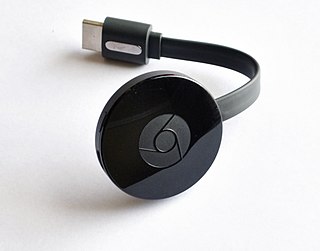
Chromecast is a line of digital media players developed by Google. The devices, designed as small dongles, enable users with a mobile device or personal computer to play Internet-streamed audio-visual content on a high-definition television or home audio system through mobile and web apps that support the Google Cast technology. Alternatively, content can be mirrored from the Google Chrome web browser running on a personal computer, as well as from the screen of some Android devices.

The first-generation iPad Mini is a mini tablet computer designed, developed, and marketed by Apple Inc. It was announced on October 23, 2012, as the fourth major product in the iPad line and the first of the iPad Mini line, which features a reduced screen size of 7.9 inches (20 cm), in contrast to the standard 9.7 inches (25 cm). It features similar internal specifications to the iPad 2, including its display resolution.

The Sony Xperia Z4 Tablet is a touchscreen Android tablet manufactured and designed by Sony Mobile. Unlike its predecessor, the Xperia Z4 tablet features a 2560 x 1600 resolution 10.1-inch screen and is water and dustproof with a rating of IP65 and IP68. The tablet is lighter and thinner than its predecessor, weighing at 0.85 pound (389 g) for the WiFi model and 0.86 pound (393 g) for the LTE model and is 0.24 inches (6.1 mm) thick. The Z4 Tablet features the Snapdragon 810 processor and WQXGA resolution screen. It was announced on 2 March 2015 in a press conference held by Sony alongside the Sony Xperia M4 Aqua during the 2015 Mobile World Congress in Barcelona, Spain.
Google Fi, formerly Project Fi, is an MVNO telecommunications service by Google that provides telephone calls, SMS, and mobile broadband using cellular networks and Wi-Fi. Google Fi uses networks operated by Sprint, T-Mobile, and U.S. Cellular. Google Fi is a service for US residents only, at the time of writing in late 2019.

Android "Marshmallow" is the sixth major version of the Android operating system and the 13th version of Android. First released as a beta build on May 28, 2015, it was officially released on October 5, 2015, with Nexus devices being the first to receive the update.
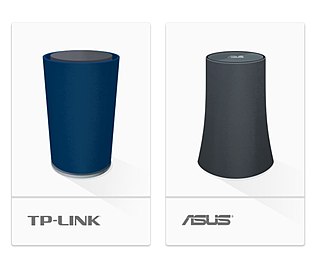
Google OnHub is a residential wireless router product from Google, Inc. The two variants are manufactured by TP-Link and ASUS. Google's official tagline for the product is "We’re streaming and sharing in new ways our old routers were never built to handle. Meet OnHub, a router from Google that is built for all the ways you use Wi-Fi." In 2016, Google released the Google Wifi router with mesh networking, and combined its functionality and network administration with the OnHub so that OnHub and Google Wifi may both be used interchangeably in mesh networks.
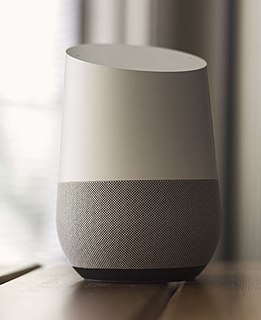
Google Home is a brand of smart speakers developed by Google. The devices enable users to speak voice commands to interact with services through Google Assistant, the company's virtual assistant. Both in-house and third-party services are integrated, allowing users to listen to music, control playback of videos or photos, or receive news updates entirely by voice. Google Home devices also have integrated support for home automation, letting users control smart home appliances with their voice. The first Google Home device was released in the United States in November 2016, with subsequent product releases globally from 2017–2019.

Google Assistant is an artificial intelligence-powered virtual assistant developed by Google that is primarily available on mobile and smart home devices. Unlike the company's previous virtual assistant, Google Now, the Google Assistant can engage in two-way conversations.

The Play:1 is a smart speaker developed by Sonos, announced and released on October 14, 2013, as the fourth and least expensive product in the Play line of speakers. It is one of the compatible speakers that can also link in SonosNet, a mesh network that can interlink speakers to play media for one, some or all speakers regardless of location.

Luma is a Wi-Fi solutions company based in Atlanta, Georgia. The company sells Wi-Fi routers using mesh networking to project a consistent Wi-Fi signal throughout private homes as well as a corresponding mobile app for added layers of security and parental controls.

The Samsung Galaxy S8, Samsung Galaxy S8+ and Samsung Galaxy S8 Active are Android-based smartphones produced by Samsung Electronics as the eighth generation of the Samsung Galaxy S series. The S8 and S8+ were unveiled on 29 March 2017 and directly succeeded the Samsung Galaxy S7 and S7 edge, with a North American release on 21 April 2017 and international rollout throughout April and May. The S8 Active was announced on 8 August 2017 and is exclusive to certain U.S. cellular carriers.

Android "Oreo" is the eighth major release and the 15th version of the Android mobile operating system. It was first released as an alpha quality developer preview in March 2017 and released to the public on August 21, 2017.

Google Lens is an image recognition technology developed by Google, designed to bring up relevant information related to objects it identifies using visual analysis based on a neural network. First announced during Google I/O 2017, it was first provided as a standalone app, later being integrated into Android's standard camera app.



